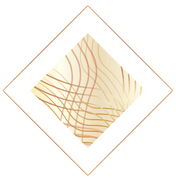Hi all
I am new here, and I am checking with the community if anyone could provide some information about a horseman pocket knife from the brand "G. Butler & Co.", which I have received 15 years ago or so from my late grandfather. He was born in Hungary and was part of the aristocracy there. He flew the country with his family when he was around 16, at the end of WWII when the country was occupied by the USSR. He then went on to live in Belgium for a short while and then moved to Canada (started working on the laying of railways there) and finally came back to Belgium for the rest of his life. I would assume this is a piece of item dating back from his time in Hungary (or maybe even from his father or grandfather). The only thing he told me when he gave it to me, was that this knife belongs to a museum. Unfortunately, I did not manage to get any further information from him on this.
The knife contains a large blade, a small blade, a can opener, a corkscrew, a small hook to help pull the laces, a "hooves cleaner", a pivoting part apparently used to remove the cartridges and a point which I do not know the utility of (pardon my vocabulary I am not familiar with technical terms). The plates appear to be silver.
From the information I could get online, this knife would be a 19th century horseman knife from Sheffield. From what I've been told, it is apparently rare to find so many functions on a knife from this era.
Here are the pictures:





Would any expert be able to provide further information on this?
Cheers
Alex
I am new here, and I am checking with the community if anyone could provide some information about a horseman pocket knife from the brand "G. Butler & Co.", which I have received 15 years ago or so from my late grandfather. He was born in Hungary and was part of the aristocracy there. He flew the country with his family when he was around 16, at the end of WWII when the country was occupied by the USSR. He then went on to live in Belgium for a short while and then moved to Canada (started working on the laying of railways there) and finally came back to Belgium for the rest of his life. I would assume this is a piece of item dating back from his time in Hungary (or maybe even from his father or grandfather). The only thing he told me when he gave it to me, was that this knife belongs to a museum. Unfortunately, I did not manage to get any further information from him on this.
The knife contains a large blade, a small blade, a can opener, a corkscrew, a small hook to help pull the laces, a "hooves cleaner", a pivoting part apparently used to remove the cartridges and a point which I do not know the utility of (pardon my vocabulary I am not familiar with technical terms). The plates appear to be silver.
From the information I could get online, this knife would be a 19th century horseman knife from Sheffield. From what I've been told, it is apparently rare to find so many functions on a knife from this era.
Here are the pictures:





Would any expert be able to provide further information on this?
Cheers
Alex















